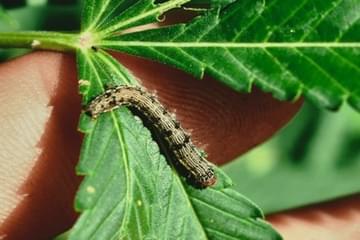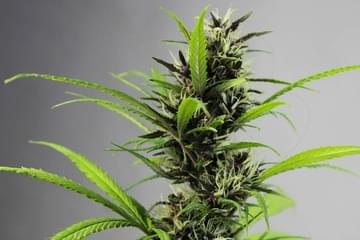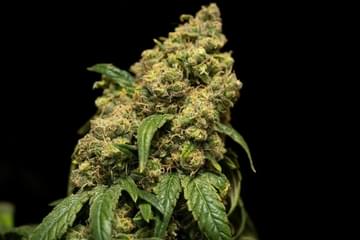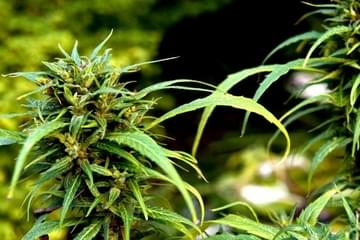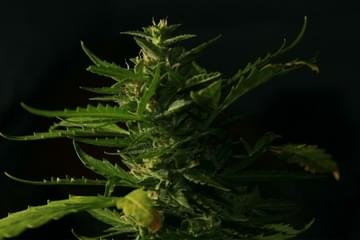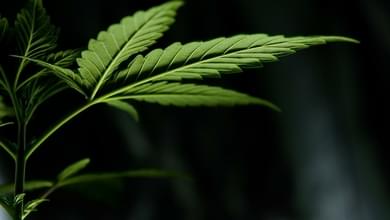
How to Tell the Sex of Marijuana Plants
Published on 10/9/20
The summer sun is still beating down, but in just a few weeks, the first cold mornings of fall will creep in, and before you know it, harvest season will have your cannabis crop bursting at the seams. Before your pot plants begin to mature, though, it is important to make sure that you selected seeds with the right sex for your desired horticultural outcome. Starting a marijuana crop from seed can be a back-breaking and gratifying experience - for more than just the resulting stash of homegrown bud. Like any other serious gardening endeavor, producing quality cannabis takes focus, effort, and attention. One of the earliest steps in making sure that your crops produce either resinous buds or seedlings for future sowing is done by sexing marijuana plants. Thankfully, with a little bit of plant science, some patience, and a keen eye, learning how to sex marijuana plants and identifying hermaphroditic growth will become second nature in your early growth cultivation routine.
Monoecious and Dioecious Plants

Like every part of the cannabis growth process, it is essential to learn a little more about marijuana plant science before ripping the wrong buds out of your garden. When it comes to reproduction, there are three types of plants; monoecious, hermaphrodite, and dioecious.
Monoecious plants produce separate male and female flowers on the same plant, allowing the female flowers to accept pollen from the male flowers on the same plant and reproduce. Monoecious plants include large trees like oaks, pines, and birch, as well as vegetables like corn and squash. In hermaphroditic plants, each flower contains both male and female sex parts, also allowing each growth to reproduce and spread without any outside pollination. Roses, lilies, hibiscus, and many other large, colorful flowers are examples of naturally hermaphroditic plants.
Dioecious plants, on the other hand, produce flowers with only one sex, requiring two separate, opposite sexed plants to pollinate and produce seeds. Cannabis, as you might have guessed, is a dioecious plant, and requires careful examination to determine which plants are male and which plants are female. Once dioecious plants like cannabis reach maturity, visual characteristics shift significantly, and the difference between male and female varieties becomes abundantly clear.
Why Separate Your Male Cannabis Plant from Your Female Weed Plant?
So when it comes to the dioecious cannabis plant, why is it important to distinguish between male and female growth? Well, if you're growing your weed to smoke or otherwise ingest cannabinoids, learning how to sex pot plants is of the utmost importance. Every joint, blunt, bowl, vape cart, and cannabis tincture you've ever used has come from a female cannabis plant. Female cannabis plants produce the THC and CBD-rich buds that we all know and love. Male plants produce pollen sacks that, if they are allowed to open, will spread a sexually potent dusting onto any nearby female plants and begin the reproduction process.

Because female pot plants are the only ones that grow the valuable and sought-after buds, most cannabis growers make sure that their garden has only female plants. If a male plant is allowed to mature anywhere near a female plant, the spread of pollen could quickly halt the production of smokeable bud and push the female to start making seeds. Of course, suppose you are looking to cross-breed a couple of your favorite strains or want to produce a bucket full of seeds to distribute to neighbors and friends. In that case, you need to make sure that you have the right male and female plants next to each other, or that you can harvest the pollen from your favorite male plant to spread on selected females. If you're looking to grow good weed, though, it is imperative to identify and isolate viable female plants as early as possible.
How To Tell If A Marijuana Plant Is Male or Female
Luckily, learning how to tell male from female pot plants is a relatively easy endeavor as long as you know what you're looking for. First, you need to know when to look. Cannabis plants begin showing their sex roughly four weeks after seed germination. In a traditional outdoor grow, it should be easy to check for your plants' sex at week six. Don't wait too long, though, as crop-ruining early pollination can occur shortly after.

Once the first four weeks of healthy growth have passed, start looking at the joint or node between the stalk and the branches. At the junction of each branch, the pre-flowering process will let you know whether each stalk is a female worth keeping or a male that needs eradication. In female plants, calyx with thin, protruding bracts will eventually turn into stigmas that look like strands of hair standing on end. In male plants, pre-flowering nodes will begin growing their first pollen sacks, which will look like small peas in the shape of a spade like the playing card suit. The difference between male and female nodes are often so small that they are not visible to the naked eye, but with the assistance of a magnifying glass or jeweler's loupe, you should be able to sex your pot plants and remove any males with plenty of time to preserve your harvest and give them even more space to grow.
Hermaphrodite Plants: What to Do With Them When Sexing Cannabis
Now that you know how to tell if your marijuana plant is male or female before flowering, it's time to tackle the most common monkey wrench in the growing process: hermaphroditic plants. No matter whether you're growing feminized seeds, guaranteed female clones, or even if you're just an expert cannabis sex selector, there is always a chance that your plants will hermaphrodite and become unusable.
If at any point during the pre-flower or flowering process, you notice the nodes of your pot plants producing both female-presenting stigmas and male-presenting pollen sacks, your plant is a hermaphrodite, or as many growers will say, the plant is "herming out." If hermed out plants are allowed to grow to completion, they will not only pollinate themselves but release clouds of pollen into the entire garden and potentially ruin an entire crop.
Pot plants present hermaphroditic characteristics for several reasons but it usually comes down to either genetics or increased stress on the plant itself. Some strains are genetically predisposed to produce both sex organs, whereas other plants can herm out due to harsh weather, inconsistent feeding or watering, or even something as simple as a broken branch. If you notice a plant turning hermaphrodite in your garden, pull it as quickly as possible and dispose of it just like you would a male. After all, if you want a bountiful harvest of gorgeous THC-packed buds, females are the only plants that should be allowed to flower in your garden.
Do you have another method to inspect your plants for pre-flower sex? Let us know in the comments below!










